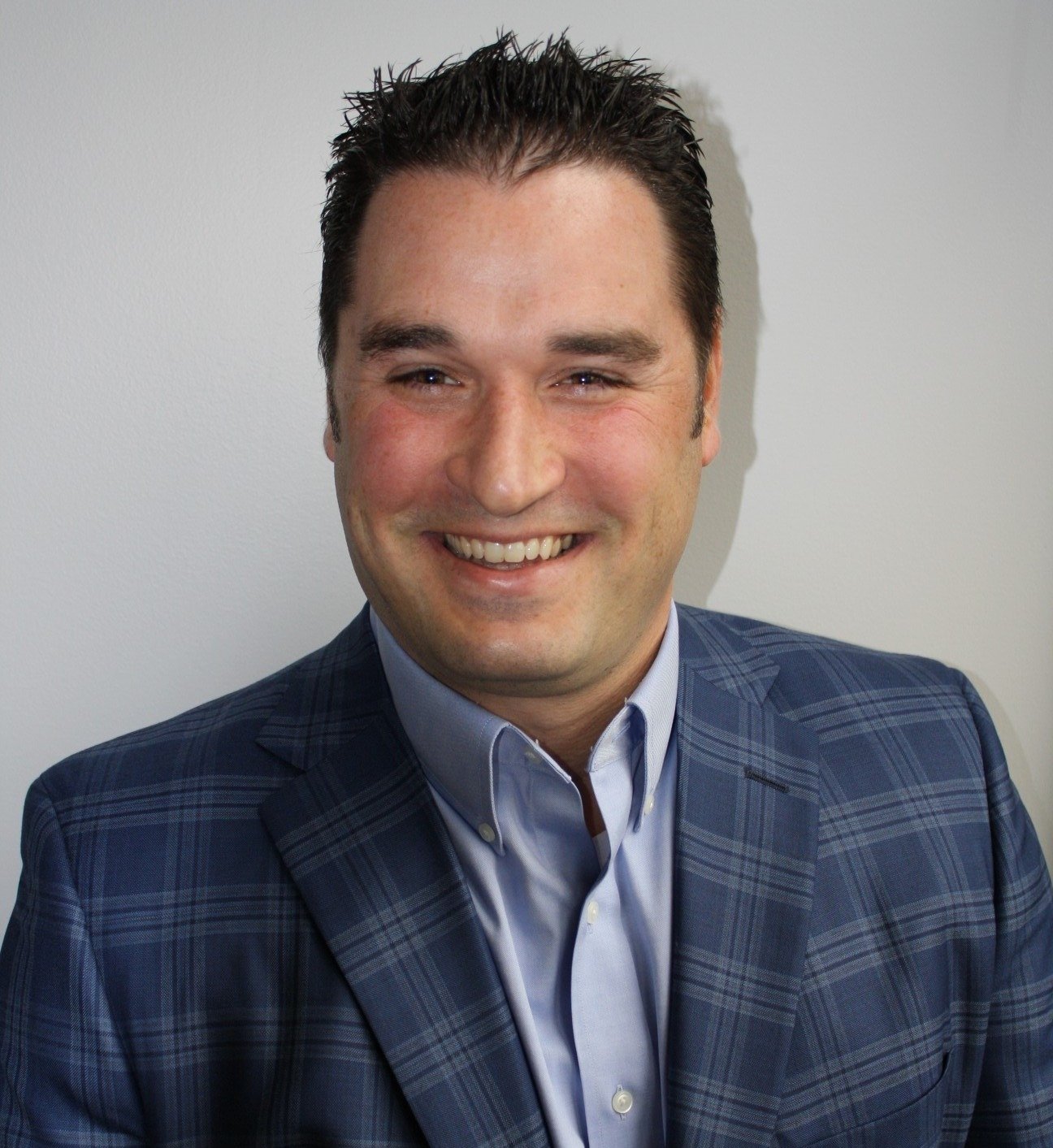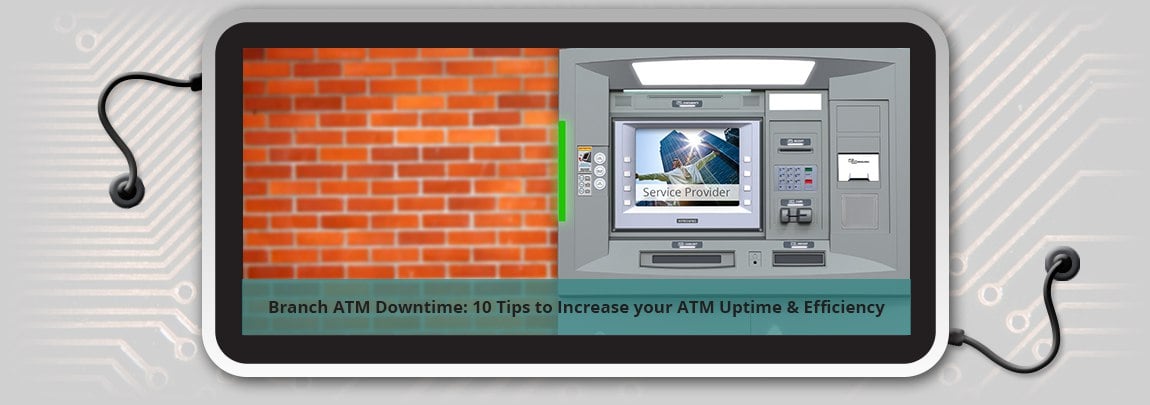Branch ATM Downtime: 10 Tips to Increase your ATM Uptime & Efficiency
As humans, many times we look at electronics as being invincible. For example, we have the six Million-Dollar Man, the Terminator and even your handy...
5 min read
 Sean Farrell
:
May 16, 2016 9:46:09 AM
Sean Farrell
:
May 16, 2016 9:46:09 AM


"The more things change, the more they stay the same". That is one of my favorite quotes. I think it's because it speaks more to the heart of human nature than most things that people have the desire to be around like minded people.
So why does this basic principle matter to you in a financial environment? How people interact with each other is changing. Today you have Twitter, Facebook, Snapchat and the list goes on. In this technology driven social environment, people have developed two habits that make your job as CSR (Customer Service Representatives) more challenging.
The attention span of consumers is getting shorter and shorter. People may momentarily make eye contact or even ask a question, and if they don't get the answer they are looking for, then they go to the next place. Or, they just open up their phone and use Google to guide their decision making. Never mind the fact you have years of experience in handling the process or transaction on a daily basis. They didn't like or understand your answer, so they keep going until they find someone who more closely presents that information in a manner that they understand. Notice that I didn't say that they received a different answer, it was just communicated in a way that resonated.
The other habit that people have developed is that they are emboldened by the fact they don't have to engage a person face to face to completely blast them, or their business in a very public manner. The Internet is full of reviews of businesses, slander about people, and one sided opinions. The downside is that you are only hearing one side. It's rarely the entire story, or it's not presented in full context of the argument.
I can remember my mother having to go to the bank two or three times a week. She needed cash, deposit my father's weekly check from work, or put money in a CD. That was thirty years ago and it was a big deal to know your loan officer, the teller, and the branch manager. The tellers knew their customers, what they drove, and how often you would see them. Today, per my own personal example, my check is directly deposited into my account. My bills are paid on the financial institution's mobile app. Any random checks I may get are deposited into my account through the mobile app. I can apply for a car loan, home mortgage, transfer funds, etc. without ever crossing the institution's threshold.
How do you engage me? How do you hold my attention longer than a minute? How do you interact with me so that I would allow you to correct a mistake vs bashing you in a public form without you ever knowing it? The answer is time and presentation. You have to give options that allow me to conduct my business in a form that I like. You also have to form a relationship in increments of time over a long period. Sounds easy, but let's look at the way most people perform a simple task. I'll give two scenarios and you tell me which you prefer.
The first is one we've all lived time and time again. You need to deposit cash and pay a loan at the same time. The traditional bank would have you walk into the lobby. Maybe you weren't very busy, but maybe you had to go when you could, at lunch. Now are three tellers, all busy between the drive through and the walk in traffic. A small line is there with a few people ahead of you. You only have thirty minutes for lunch, but you have to get this done, so you wait. 10 minutes goes by and you are just arriving at the window. Now the teller takes your cash and looks down. She's counting the money and making sure the deposit slip matches your cash.
She then has to break apart the currency and place it into the drawer. You receive the receipt and transaction one is completed. Taking maybe 1.5 minutes to complete. Not bad, but not a word is said to you during the transaction. "Is there anything else I can help you with today?" Now the paying to the loan takes place. You say what you need and again the teller's head goes down and another 2 minutes goes by without anything being said because the teller has to concentrate on the transaction.
From the customer's point of view, you have taken half their lunch break, have not really engaged them, and they go about their day never really thinking about the institution again. That doesn't really sound like customer service. That sounds more like meeting the minimum expectation.
Now let's conduct those same transactions in another environment. The first difference is that the branch doesn't look like the stereotypical lending institution from the past 60 years. It's an open space and there are small groups of tables in the center of the room. To one side there are offices for loans, new accounts, and other business transactions that require more privacy. On the other side is a wall that has two kiosks that resemble an ATM. The wall facing you is bright and branded with the things that make that institution yours. Now the same person walks in and instead of being greeted by a line, they are met by a CSR. The CSR is cross trained to handle several transactions and greets you by saying, "How are you today MR or MRS Smith? How may I help you today?”
You may be wondering, "Where are the people that were in line from the first scenario?" Those people don’t have to wait in line, either, because the FI has made the same transactions they were waiting to completed 4 times faster and not dependent on a teller.
In today's environment, we can give the consumer choice. They can still meet with the CSR and have that one on one interaction people are used to. The difference is the small tables in the center of the room. Let's call them "Pods". Those Pods have a cash recycler in the middle and a computer terminal. The customer now gets to sit, or stand right next to the CSR and complete the transaction in a more personalized manner.
The recycler is counting the cash in and out for the transaction, so the CSR can now engage the person on a deeper level. "How are the kids? How do you like your new car? What's new at work?" All of these are things that open up a dialogue to look for new things to sell. "Mr. Smith I see you have over $10,000 in your Savings account. Have you thought about earning more interest on that money in a short term CD?" “So, you are planning to put in a pool this summer? Have you thought about a HELOC?" You've truly engaged the customer and are not just completing the transaction and sending them on their way.
There is still another option in this modern scenario. Those machines on the side that look like ATMs are fully functional teller replacements. They can complete any series of tasks a teller can do on your core software system. That deposit and loan payment, it's completed with a few key strokes. Now the same transaction that took almost 15 minutes to complete with a teller line, wad now done in just 4. The win for the institution is that you didn't use a person, or labor cost to complete that transaction. Also, if the customer gets confused in the transaction, there is a help button. If they press it, a remote live teller, can now complete the transaction just like they were in the line at the branch. It's real savings for the institution in labor, it's savings for the customer in time, and now you just made doing business easier. For me, I love the option to do more in a shorter amount of time. Did I mention the CSR can oversee the transaction through a tablet without having to engage the customer directly?
This model of financial business is being used now and the institutions that are using and embracing it, are excelling. With the world getting faster and faster, you have to make more with less. It doesn't matter if that's time, personnel, or branch space. Giving people more ways to do business begins to separate one institution from another. Using new technology creates a more efficient business model by cutting labor costs, human error, and establishing a more reliable system. You are now able to spend more quality time with each person and creating a deeper relationship. There will be more opportunities to cross sell products and provide a higher level of service. Now those things that you never knew where problems are now resolved on site and in a more personal manner. That is something that people today are looking for, a more personal experience through technology.

As humans, many times we look at electronics as being invincible. For example, we have the six Million-Dollar Man, the Terminator and even your handy...

If you're like most institutions today, you're not just looking for growth. You're trying to hang on to the customers you already have. The pressure...

Don’t you love when you call a business and you get the automated message to press a certain department or extension number just to get another...